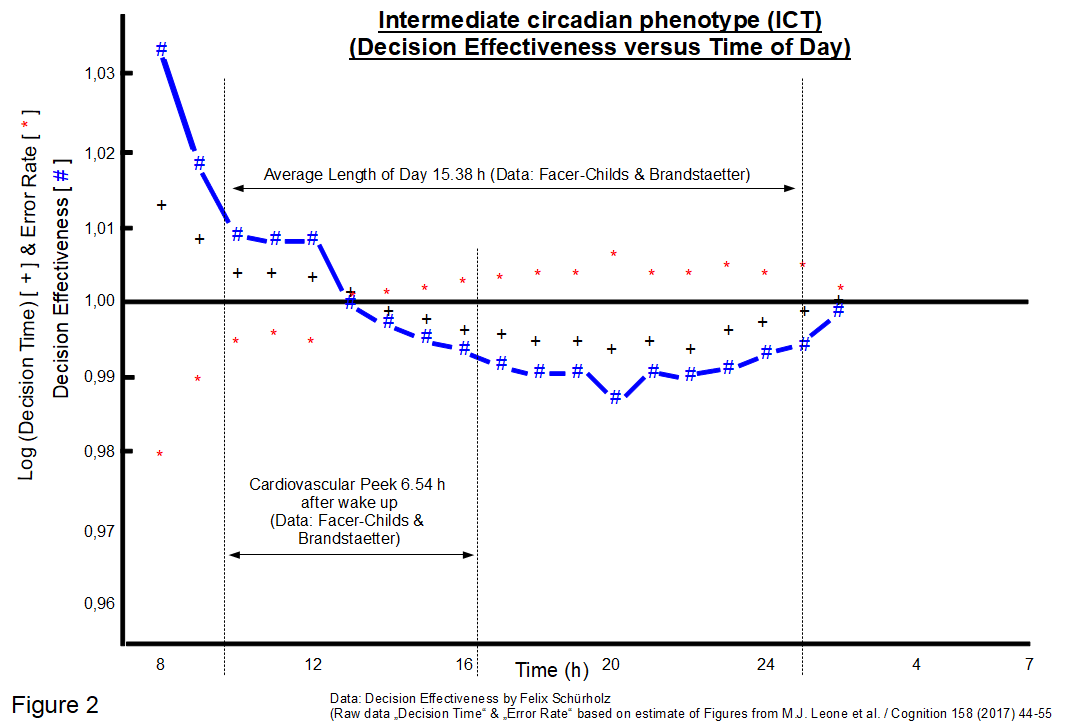Title: An Integrated Model for Motivation and Self-efficacy in Decision Making (ME-DM)
Author: Felix Schürholz, www.decisiontiming.com
Published Online: March 16, 2018
Article on Semantic Scholar: Access
Download Article above: Click to download
Short Version of Article: View here
Title: Ideal Time of Day for Decision-Making (Applying Decision Effectiveness)
Author: Felix Schürholz, www.decisiontiming.com
Published Online: November 20, 2017
Article on Google Scholar: Access
Download Article above: Click to download
Title: Ideal Times for Decision Making according to Circadian Phenotype, Social Environment and Climate (Summary)
Author: Felix Schürholz, www.decisiontiming.com
Published Online: November 11, 2017
Abstract: Small changes in perspective, framing or association can vastly improve decision making habits and results. In this paper a new definition for decision effectiveness is formulated and applied to real life data of decision making processes of internet chess players, as well as diurnal fitness changes of athletes. The new concept yields valuable insights on decision making patterns of humans in general, and circadian phenotypes in particular. By focusing on the concept of decision effectiveness, rather than efficiency, allows to find robust behavioral dispositions that can be analyzed, measured and improved upon.
Keywords: Decision Making, Decision Timing, Decision Effectiveness, Circadian Rhythms, Human Chronobiology, Climate
Highlights:
● Early circadian phenotype (ECT) is the phenotype with the highest decision effectiveness, in a moderate climate, or positive social environment.
● ECT´s highest decision effectiveness is on average between 8 a.m. and 12 p.m., and peaks at around 10 a.m.
● During that time ECT will on average take the most ethical decisions.
● Intermediate circadian phenotype (ICT) tends to miss its morning peak due to a later wake up time at around 9.40 a.m.. This behavior can be associated with a real or assumed cold climate, or colder/more critical social environment.
● ICT´s highest decision effectiveness is in practice between 10 a.m. and 12 p.m.
● ICT´s afternoon and evening decision effectiveness is, in comparison to ECT, higher and more stable.
● Late circadian phenotype (LCT) has two major peaks of high decision effectiveness. The first, between wake up (around 11:15 a.m.) and about 1 p.m., and the second, from around 10 p.m. to 2 a.m.. This behavior can be associated with a real or assumed hot climate, or strong social cues and standards in the environment.
● The highest decision effectiveness will be in the morning provided that waking up takes place before 12 p.m.
● In comparison to ECT and ICT, LCT is the only circadian phenotype that has a high decision effectiveness after about 10 p.m.
● During that time (after 10 p.m.) LCT will on average take the most ethical decisions.
Reference:
Facer-Childs, E., & Brandstaetter, R. (2015). The impact of circadian phenotype and time since awakening on diurnal performance in athletes. Current Biology, 25(4), 518–522.
Gunia, B. C., Barnes, C. M., & Sah, S. (2014). The Morality of Larks and Owls Unethical Behavior Depends on Chronotype as Well as Time of Day. Psychological Science, 25(12), 2272-2274.
Leone, M.J., Slezak, D.F., Golombek, D., Sigman, M. (2017). Time to Decide: Diurnal Variations on the Speed and Quality of Human Decisions. Cognition, 158, 44—55.
Download Summary here: Click to download
Images/Data:
Figure 1 
Figure 2 
Figure 3 